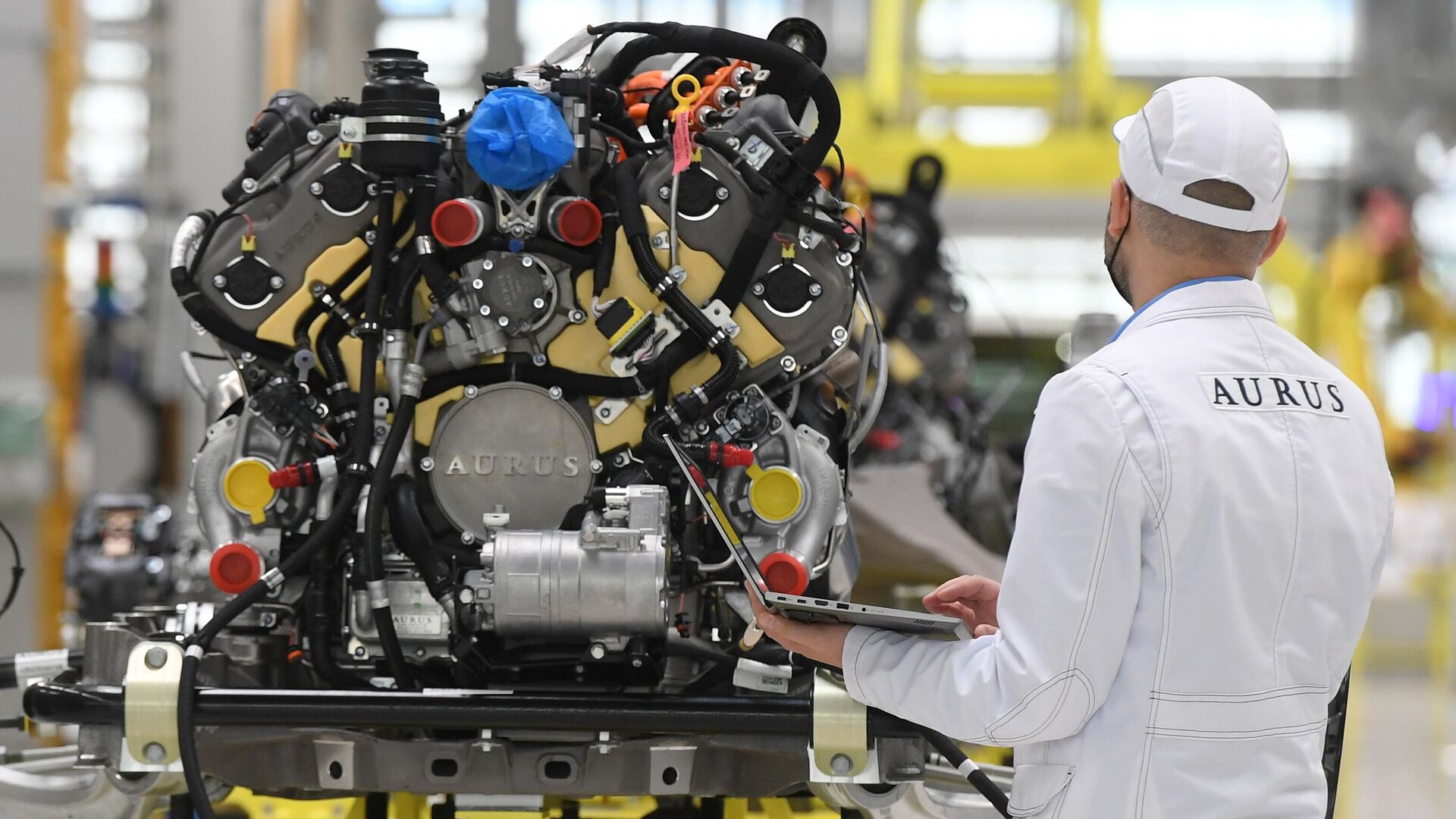https://sputnikglobe.com/20240208/russian-scientists-reveal-breakthrough-in-hydrogen-energy-fuel-1116671080.html
Russian Scientists Reveal Breakthrough in Hydrogen Energy Fuel
Russian Scientists Reveal Breakthrough in Hydrogen Energy Fuel
Sputnik International
Scholars working at a major Siberian research center in Russia have found a viable alternative to hydrocarbon fuel in order to produce synthesis gas (syngas).
2024-02-08T17:15+0000
2024-02-08T17:15+0000
2024-02-08T17:15+0000
beyond politics
science & tech
russia
russian academy of sciences (ras)
hydrogen
novosibirsk
siberia
https://cdn1.img.sputnikglobe.com/img/07e8/02/08/1116670907_0:160:3072:1888_1920x0_80_0_0_3ae9a0b6715ca10909a1b21b6520228f.jpg
Specialists from the Boreskov Institute of Catalysis — a Russian Federal Research Center — part of the Siberian Branch of the Russian Academy of Sciences (SB RAS) collaborated with researchers from the Hydrogen Center, part of the national technological initiative platform, to discover the very first alternative to hydrocarbon fuel for syngas production.Syngas is used for fuel elements in promising hydrogen energy, Sputnik was told at the center.Dimethoxymethane (methylal) is an oxygen-containing organic compound that is obtained from methanol, but it is non-toxic and easier to handle. Due to its properties, dimethoxymethane has the potential to be used in hydrogen energy as an alternative raw material for synthesis gas production.According to the researchers, syngas that normally contains hydrogen and carbon monoxide is produced by catalytic methane conversion with a significant release of carbon dioxide. To produce syngas from dimethoxymethane by air conversion, specialists have developed highly effective catalysts with platinum content (a mere one percent of weight)."This technology’s core strengths lie in low reaction temperature (half as much as the methane steam conversion), not having to purify the gas and the autonomy of the unit. The reaction can be conducted without an external energy source, and the total hydrogen and carbon monoxide content at the outlet of the catalytic reactor reaches approximately 70 percent. When using steam methane conversion, this figure stands at roughly 50 percent. In addition, air conversion process allows to use and methanol, which is more accessible," the center announced.Pavel Snytnikov, the head of the 'Hydrogen as the Basis for Low Carbon Economy' Center, noted that the development of energy, transport and chemical industries is directly related to gas chemistry. Natural gas processing technologies, especially the so-called C1 chemical products (including dimethoxymethane) will therefore become the "building blocks" of the new gas-chemical industry and will partially replace hydrocarbons, eventually reducing the overall carbon footprint.
https://sputnikglobe.com/20231220/revolutionary-discovery-russian-scientists-transform-potatoes-into-nanotech-marvels-1115703100.html
https://sputnikglobe.com/20231213/new-nanocomposite-that-may-revolutionize-water-purification-developed-in-russia-1115553885.html
russia
novosibirsk
siberia
Sputnik International
feedback@sputniknews.com
+74956456601
MIA „Rossiya Segodnya“
2024
Sputnik International
feedback@sputniknews.com
+74956456601
MIA „Rossiya Segodnya“
News
en_EN
Sputnik International
feedback@sputniknews.com
+74956456601
MIA „Rossiya Segodnya“
Sputnik International
feedback@sputniknews.com
+74956456601
MIA „Rossiya Segodnya“
hydrocarbon fuel, synthesis gas, syngas, what is syngas, how does syngas work
hydrocarbon fuel, synthesis gas, syngas, what is syngas, how does syngas work
Russian Scientists Reveal Breakthrough in Hydrogen Energy Fuel
Scholars working at a major Russian research center in Siberia have found a viable alternative to hydrocarbon fuel in order to produce synthesis gas (syngas).
Specialists from the Boreskov Institute of Catalysis — a Russian Federal Research Center — part of the Siberian Branch of the Russian Academy of Sciences (SB RAS) collaborated with researchers from the Hydrogen Center, part of the national technological initiative platform, to discover the very first alternative to hydrocarbon fuel for syngas production.
Syngas is used for fuel elements in promising hydrogen energy, Sputnik was told at the center.
"The specialists were the first ones to ever successfully convert a synthetic organic dimethoxymethane compound into a synthesis gas for the supply of solid oxide fuel cells (SOFC)," the center said. "The relatively low reaction temperature of 400 degrees and high purity of the product allows making SOFC-based power plants autonomous, mobile and more compact."
Dimethoxymethane (methylal) is an oxygen-containing organic compound that is obtained from methanol, but it is non-toxic and easier to handle. Due to its properties, dimethoxymethane has the potential to be used in hydrogen energy as an alternative raw material for synthesis gas production.

20 December 2023, 13:16 GMT
According to the researchers, syngas that normally contains hydrogen and carbon monoxide is produced by catalytic methane conversion with a significant release of carbon dioxide. To produce syngas from dimethoxymethane by air conversion,
specialists have developed highly effective catalysts with platinum content (a mere one percent of weight).
"This technology’s core strengths lie in low reaction temperature (half as much as the methane steam conversion), not having to purify the gas and the autonomy of the unit. The reaction can be conducted without an external energy source, and the total hydrogen and carbon monoxide content at the outlet of the catalytic reactor reaches approximately 70 percent. When using steam methane conversion, this figure stands at roughly 50 percent. In addition, air conversion process allows to use and methanol, which is more accessible," the center announced.
"We were the first ones to demonstrate that producing syngas from dimethoxymethane through air conversion was possible […] Counter to thermodynamics, the reaction proceeds as efficiently as possible at 400 degrees. Dimethoxymethylene and oxygen from the air are fully converted into syngas with a high hydrogen and CO content," said Sukhe Badmaev, author of the study and leading researcher at the Heterogeneous Catalysis Department at the Boreskov Institute of Catalysis (SB RAS).

13 December 2023, 12:36 GMT
Pavel Snytnikov, the head of the 'Hydrogen as the Basis for Low Carbon Economy' Center, noted that the development of energy, transport and chemical industries is directly related to gas chemistry.
Natural gas processing technologies, especially the so-called C1 chemical products (including dimethoxymethane) will therefore become the "building blocks" of the new gas-chemical industry and will partially replace hydrocarbons, eventually reducing the overall carbon footprint.




